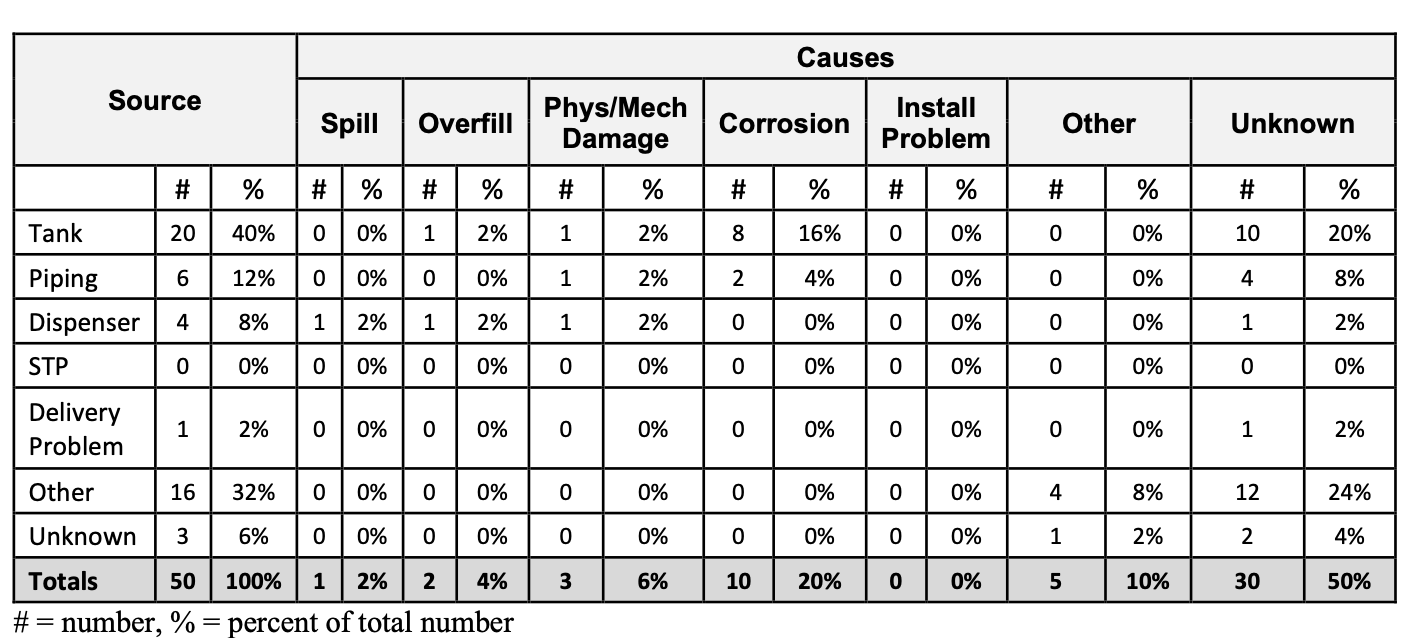Post Pump
Gas/Fuel/Service Station Land Use & Zoning for an EV World
Stay in Touch
Reports and Research
Do you have a suggestion on data to add? Please email brandon@postpump.org
Frequency of Leaks
Oregon DEQ Annual Leak Report, 2021
Oregon DEQ reported 50 Underground Storage Tank releases between October 1st 2020 and September 30th 2021 in their annual report. For a sense of scale, 50 leaks means 2.8% of the 1,796 regulated Oregon Underground Storage Tank facilities leaked in one year. And many of the leaks in the DEQ database are not detected until the tank is decommissioned. Also, it is worth understanding from the Oregon DEQ annual report that even if the tank itself is working perfectly USTs can leak from their dispensers, piping, or have spills caused from delivery hardware.
Summary of State Programs and Data on Abandoned Underground Storage Tanks and Facilities, 2017
This report has a lot of data from a bunch of different states. Unfortunately, due to the use of averages, no information on cleanup requirements, and the wide range of dates covered no useful conclusions can really be drawn from the report. It is included for completeness primarily and as a reference to the variety of State laws that apply to USTs.
Economic
The total cost of gas station cleanup can be difficult to find. If the government has to step in the number of involved agencies and funding sources often complicate matters. However, we are trying our best to find examples.
Senz Automotive Service, Yamhill Oregon
In November 2021 Brandon Philips made a public records request for Senz Automotive Service in Yamhill, Oregon. This site has a long and complex cleanup history with thousands of gallons of petroleum products lost which contaminated on-site soil, groundwater, and neighboring properties. So, far Oregon DEQ’s cleanup costs have been $514,466.53. However, the cleanup is not complete and the damage to adjacent property values due to contamination is difficult to calculate.
Drinking Water and Environmental Risks
Preventing Groundwater Contamination at Gas Stations – What Municipalities and Water Suppliers Can Do New Hampshire DES, 2020
This 2020 report outlines how municipalties can and should use land use code siting restrictions to protect public health and the environment from leaks from gas stations. The report begins:
Generations of automobile drivers have become accustomed to finding gas stations conveniently located along busy roads and highways, at intersections, and in village centers, to support our automobile-dependent lifestyles. As the environmental risks associated with gas stations – particularly the risk of gasoline leaked from underground storage tank (UST) systems – have become increasingly clear, vast improvements have been made in the design, construction and operation of UST systems. Unfortunately, federal and state regulators and UST system designers and installers have not succeeded in engineering all of the groundwater contamination risk out of these systems. A study by the U.S. Geological Survey, which randomly sampled 225 water supply wells in Rockingham County in 2003, detected the gasoline additive MtBE in 40% of public wells, and found a correlation between MtBE concentration and proximity to USTs.
